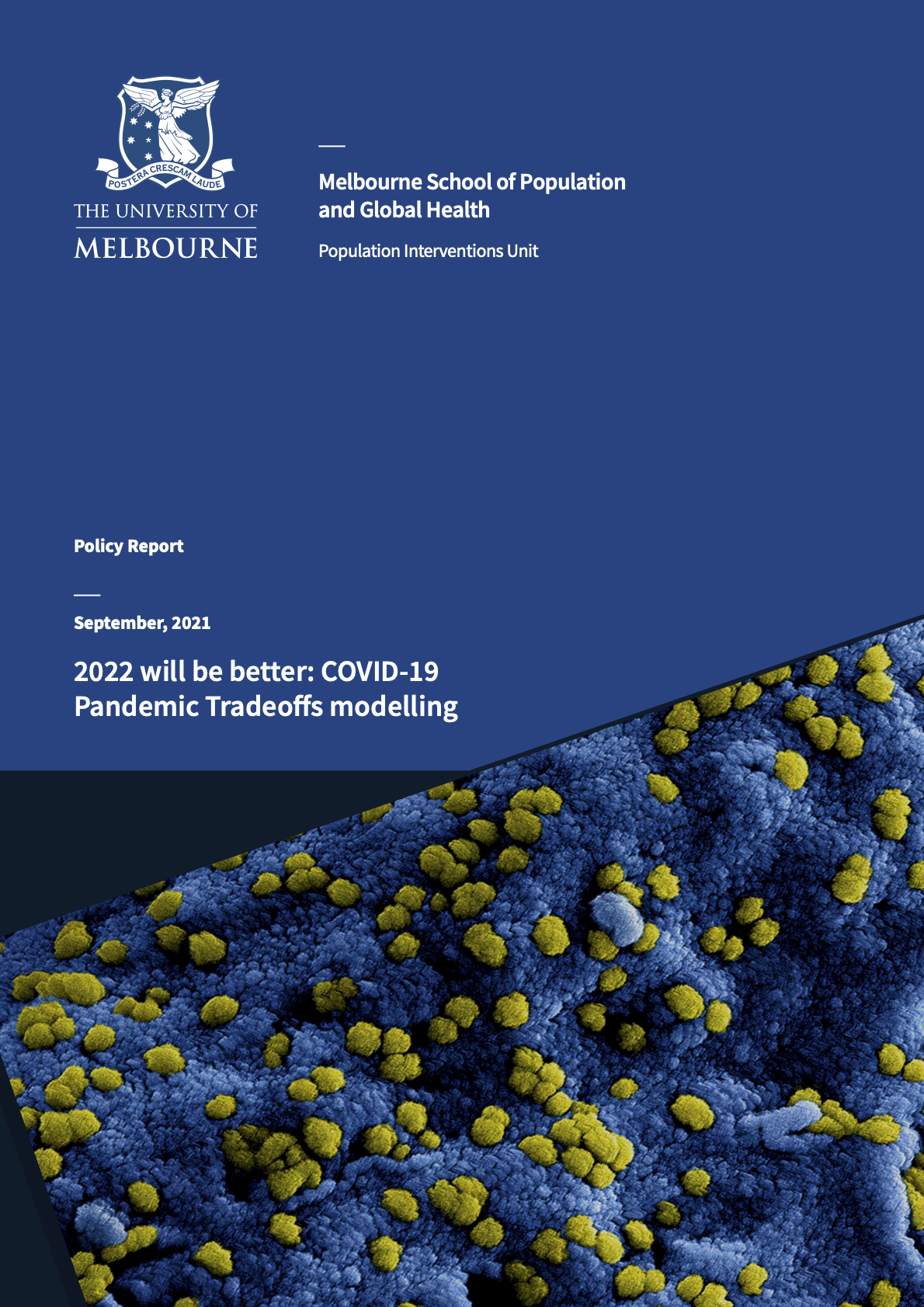2022 will be better: COVID-19 Pandemic Tradeoffs modelling report
This ‘COVID-19 Pandemic Trade-Offs’ modelling report (PDF 9.0 MB) throws light on what next year might look like once we open up to the world.
This report covers 432 possible scenarios, each modelled 100 times in an agent-based model to capture as many futures as possible. All results are publicly available at an interactive webtool.
We model 432 scenarios for combinations of:
- virus reproductive number (R0)
- vaccine coverage,
- minimum age to be eligible for vaccination,
- how open our borders are to quarantine-free travel, and
- the within-country suppression strategy, and
- the acceptable range of restriction levels
Default Strategy:
We start with a default strategy that we think many people have in mind: 80% of adults vaccinated, moderate opening of borders, and a loose suppression strategy in-country that tries to keep cases well within what our health services can manage.
This keeps the health loss well in check – ‘only’ about 4000 hospitalisations over a year in a state the size of Victoria. However, to achieve this the default strategy would see us in lockdown 39% of the time (uncertainty range 12% to 62%). We have to do better.
Upgraded Strategy:
With an upgraded scenario that includes 5-plus-year-olds 80% vaccinated and has a minimum level of public health and social measures that we do not go below (e.g. density limits in hospitality, work at home when you can), the health burden reduces three quarters (130 to 1800 hospitalisations over the year and 36 to 490 deaths over the year, in a state the size of Victoria). But we still see an expected 14% of time in lockdown – with a probability it could still be half the time in lockdown in some of our simulations. We have to do better.
Innovative strategy:
90% vaccination coverage of both adults and children drives the time in lockdown down to zero. And there are INNOVATIONS that our modelling suggests will also help: improved ventilation and filtration in indoor spaces, rapid antigen testing and Bluetooth apps that actually work all help reduce our reliance on lockdowns
We will need as high vaccine coverage as we can achieve and innovations to not only reduce our reliance on lockdowns, but also to manage the inevitable waning vaccine immunity we will confront next year before we roll out boosters.
That all said, there is a pathway to and through 2022 that will be better than what we experienced in 2020 and 2021.
Contributors
- The data visualisations and interface for this tool were developed by Luke Thorburn and Hassan Andrabi.
- The modelling was led by Dr Tim Wilson, assisted by Haifeng Zhao and Sachith Seneviratne. The original agent-based model was built by Dr Jason Thompson, assisted by Profs Rod McClure, Mark Stevenson and Tony Blakely. The integrated epidemiological and economic model (proportional multistate lifetable) is a collaboration between the University of Melbourne and the Institute of Health Metrics and Evaluation (University of Washington), with key contributions from: Prof Abie Flaxman and Mr James Collins (IHME); Drs Rob Moss, Nic Geard, Patrick Andersen and Tim Wilson (University of Melbourne), assisted by all members of the Population Interventions Unit (Drs Driss Ait Ouakrim and Laxman Bablani, and Profs Vijaya Sundararajan and Tony Blakely).
- The determination of which diseases and conditions are impacted by COVID-19 restrictions, and with what magnitude, was undertaken by Dr Driss Ait Ouakrim, Ms Ameera Katar, Mr Patrick Abraham, Dr Natalie Carvalho and Prof Nathan Grills.
- Overall leadership of the body of work was by Prof Tony Blakely.
- Web hosting and technical support was provided by Grace Dong and Dr Melissa Makin.
- We acknowledge a generous anonymous philanthropic grant, through Advancement, that enabled this project.
Contact Details
Please direct media or other enquiries about this research to the Population Interventions Unit at the following address.
